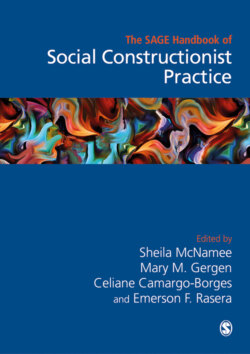Читать книгу The Sage Handbook of Social Constructionist Practice - Группа авторов - Страница 125
На сайте Литреса книга снята с продажи.
Deconstructing Animacy and Inanimacy
ОглавлениеPart of the challenge for us as contemporary social constructionist, practice-based researchers, is to explore the language we use to describe human and non-human worlds so we can see that all matter is dynamic, agentive and communicative.
New materialist thinkers encourage us to deconstruct the language of animate/living, and inanimate/dead (Bennett, 2010; Chen, 2012), viewing this as a social construction which has served to teach communities and their colonisers a disconnection between their immediate local and their remote global environments. Jane Bennett discourages the term ‘environment’ in order to highlight ‘vital materiality’ (Bennett, 2010: 112). She points out that ‘We are vital materiality and we are surrounded by it, though we do not always see it that way. The ethical task at hand here is to cultivate the ability to discern nonhuman vitality, to become perceptually open to it’ (Bennett, 2010: 14). Donna Haraway says:
It matters what matters we use to think other matters with; it matters what stories we tell to tell other stories with; it matters what knots knot knots, what thoughts think thoughts, what descriptions describe descriptions, what ties tie ties. It matters what stories make worlds, what worlds make stories. (Haraway, 2016: 12)
A consequence of the anthropocentric narrative is to categorise matter as either animate or inanimate (Bennett, 2010). Rock is not inanimate, it is alive, and it hosts life, it protects life. It provides a platform for life. In terms of the time frame in which plants, animals and humans live, rock offers stability. We humans have a short life span compared to rock. Rock grows or changes in a relational world in mostly a much slower time frame to the life spans of humans, flora and fauna. We don't notice the parallel time worlds. We think rock and glaciers are dead because they are not moving in ways we can perceive with our eyes. We tell ourselves simple stories. We say they are frozen, immobile, inanimate. But it is we who are frozen in time. Our own time frame. A human time frame (Simon and Salter, 2019).
